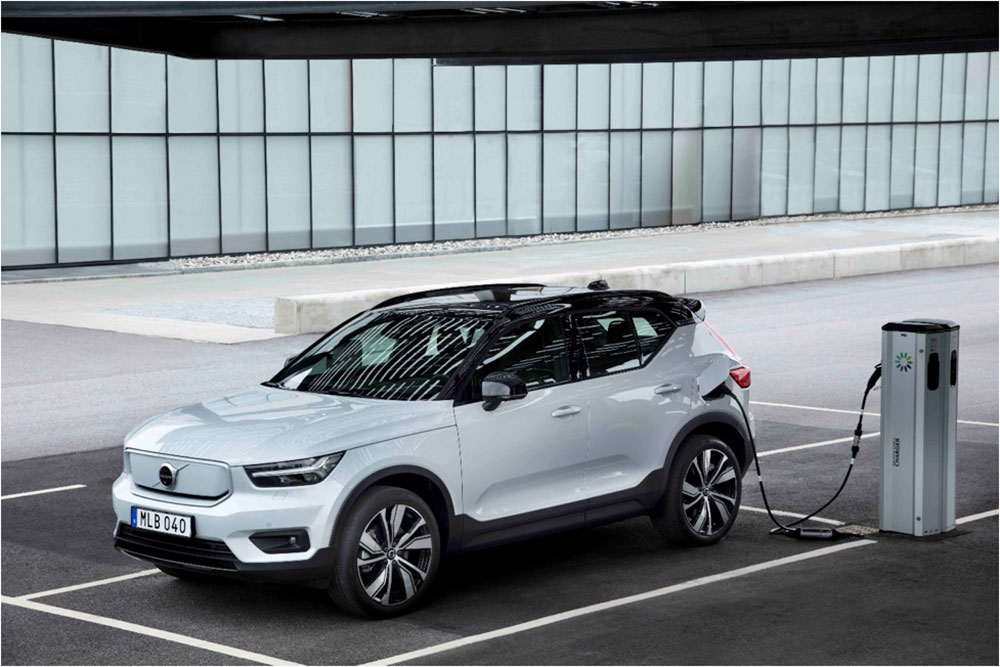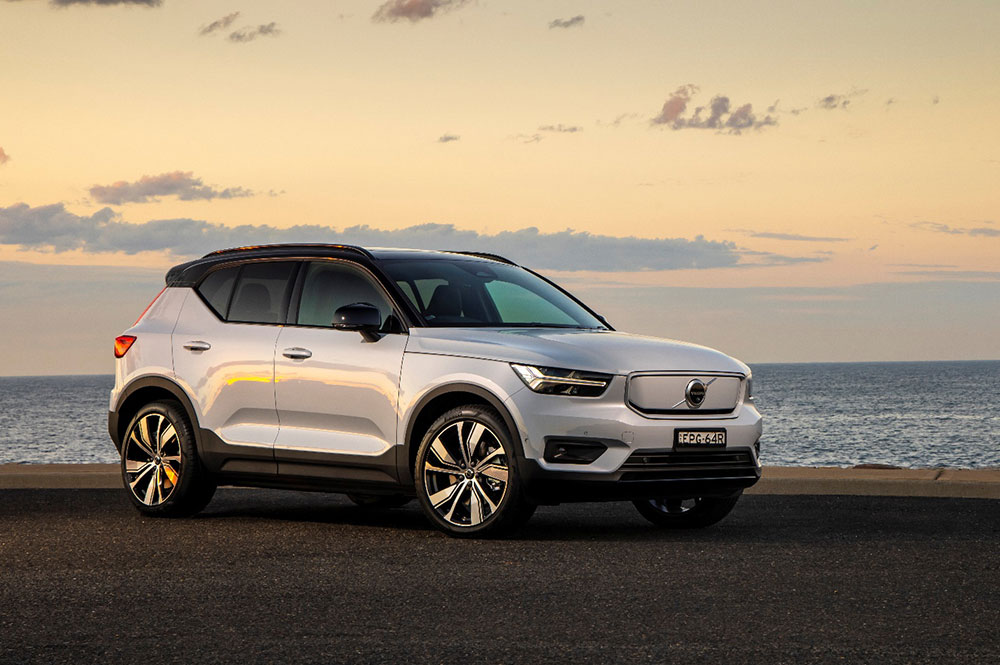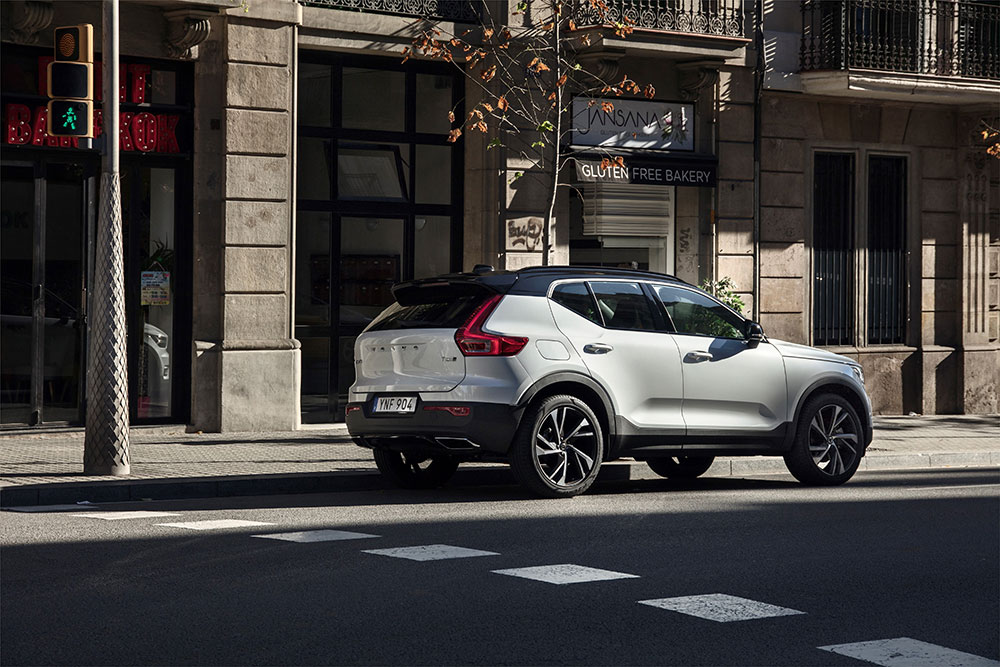Volvo XC40 Recharge Pure Electric twin motor review
Volvo’s first compact electric SUV is a victim of its own success, with the first allocation sold out.

Electric vehicles are hot property with demand driven by record high fuel prices and a growing awareness about the need to reduce emissions.
Swedish luxury car maker Volvo is one of the many automotive brands repositioning itself as a leader in the EV space, most notably with the battery electric version of its XC40 compact SUV, dubbed the XC40 Recharge Pure.
The company has committed to having half of its global sales electrified by 2025, before going completely electric by 2030, with the XC40 Recharge Pure notable for being the first of a wave of all-electric Volvos designed to fulfil these ambitious goals.
The next model in Volvo Australia’s EV assault, the MY23 single-motor XC40 Recharge Pure is due to arrive mid-year, offering consumers a more affordable version that will slot in under the twin-motor AWD XC40 Recharge Pure.
Right now, however, the MY22 twin-motor version is the only fully electrified Volvo on the market, and even that’s academic because the original allocation has sold out, with Volvo Australia now sweating on the arrival of the updated MY23 single and twin-motor XC40 Recharge Pure models.
Until then, the XC40 range comprises a 2.0-litre petrol model offered in three grades with MLPs ranging from $48,490 to $58,490, and a single 1.5-litre petrol-electric plug-in hybrid (PHEV) with a list price of $66,990.
The sold-out XC40 Recharge Pure twin motor, meanwhile, sports a manufacturer list price of $76,990 but brings with it a healthy haul of additional features and creature comforts, not the least of which are its twin electric motors and all-paw drivetrain.
Other key features include a Harmon Kardon premium audio system, 9-inch tablet-style centre display screen, fully integrated Google Android infotainment operating system with Google Maps and Google Assistant (four-year subscription), Android Auto and Apple CarPlay, DAB+ radio, satnav, two-zone climate control, clean-zone cabin air quality system, power front seats with memory for driver, leather accented seating, heated front and outer rear seats, heated steering wheel, 360-degree camera, panoramic sunroof, 20-inch alloys, adaptive cruise control, LED active bending headlights, inductive smartphone charging and a smart power tailgate.
Inside, the XC40 Recharge Pure features attractive minimalist design with a premium look and feel and generous occupant space, by compact SUV standards.

There are 419 litres of cargo space, which is a little less than its petrol-only siblings, with the charging cable stored in a lidded bin under the bonnet. An inflator kit rather than a spare wheel is standard.
Unlike other XC40 models, the Recharge Pure electric has no start button or park brake operating mechanism for the driver. Just unlock the car with the key in your pocket or bag, buckle up, select a gear and drive away.
When you leave the car it’s pretty much the reverse. It feels a bit weird at first, but makes sense once you get your head around it.
The first thing you notice when you accelerate away is the sheer grunt of the twin electric motors.
With maximum combined outputs of 300kW/660Nm, there’s a real sense of urgency in the way the Recharge Pure responds to a dig of the spurs, whether off-the-line or in rolling acceleration.
The official zero to 100km/h claim is an impressive 4.9 seconds.
A 78kW/h lithium-ion battery pack installed under the floor feeds the motors and delivers a range of 418km (WLTP).
At a maximum DC fast charge rate of 150kW drivers can expect a charge time of around 40 minutes from zero to 80% capacity on such fast chargers.
However, if using the far more common 10-amp domestic power outlet, budget on 32 hours for a full charge.

The electric Volvo is easy to drive with a capable, secure, and confident stance through twists and turns.
To our tastes, the steering is more palatable left in its ‘firm’ setting rather than the ‘light’ option selected from the menus.
Riding as it does on 20-inch wheels shod with 40-series rubber, the ride quality is well short of plush but the vehicle remains composed over road imperfections.
The level of regenerative braking (where the vehicle slows and recharges the battery as you decelerate) is adjustable from zero through to the most aggressive ‘one pedal driving’ setting.
Volvo warrant the vehicle for five years/unlimited kilometres, which is longer than some of its prestige competitors, with coverage on the traction battery extending to eight years.
When it arrives, the new single-motor version will come in a single luxury specification with a slightly more affordable list price of $72,990.
The MY23 twin-motor will cost $79,990 and feature a new front bumper design, frameless grille plate, new headlamp surround finishes, new wheels and new rear bumper inserts, as well as Pixel headlight technology and sustainable upholstery amongst its specification changes.
Our drive of the appealing MY22 XC40 Recharge Pure Electric suggests that Volvo Australia’s cash registers will keep ringing when the MY23 models arrive, with the expanded electrified line-up seemingly well placed to satisfy the growing number of luxury segment buyers looking to transition to lower emissions mobility.
Key stats
- MLP: $76,990
- ENGINE: Twin electric motors, (150kW front, 150kW rear)
- ANCAP CRASH RATING: Five stars (2018)
- POWER CONSUMPTION (combined cycle, litres/100km): 255Wh/km (0g/km CO₂ - tailpipe)
- FOR: Impressive performance, deft handling with decent ride quality, spacious, quality finish cabin, high equipment levels.
- AGAINST: Priced higher price than hybrid and petrol models in the range, mobility kit in lieu of a spare wheel, initial allocation of MY22 models already sold, $3k price increase for new twin-motor.
Know you're covered with RACQ Car Insurance
Related topics
Things to note
The information in this article has been prepared for general information purposes only and is not intended as legal advice or specific advice to any particular person. Any advice contained in the document is general advice, not intended as legal advice or professional advice and does not take into account any person’s particular circumstances. Before acting on anything based on this advice you should consider its appropriateness to you, having regard to your objectives and needs.
Insurance Products (excluding Travel Insurance) are issued by RACQ Insurance Limited ABN 50 009 704 152 (RACQI) and arranged by its agent, RACQ Distribution Services Pty Ltd (RDS) ABN 35 116 361 650, AFSL 567130 and RDS' authorised representatives (including RACQ Operations Pty Ltd ABN 80 009 663 414, AR No. 234978 (RACQO). Conditions, limits and exclusions apply. RDS and RACQO are in the RACQ group of companies. One of the companies in the RACQ group of companies has a minority shareholding in RACQI.
RDS and RACQO have not taken your personal objectives, circumstances or needs into account when preparing advice regarding insurance products and you will need to consider whether the advice is appropriate for you. Read the Product Disclosure Statement (PDS) and any applicable Supplementary PDS before making a purchase decision on this product. You can also access our Target Market Determinations on this website. RDS receives a commission from RACQI for the policies it arranges. RACQO receives fees paid for services it provides to RDS. Further details about remuneration are available on request prior to purchasing.
Banking and loan products issued by Members Banking Group Limited ABN 83 087 651 054 AFSL/Australian credit licence 241195 trading as RACQ Bank. Terms, conditions, fees, charges and lending policies apply. This is general advice only and may not be right for you. This information does not take your personal objectives, circumstances or needs into account. Read the disclosure documents for your selected product or service, including the Financial Services Guide and the Terms and Conditions, and consider if appropriate for you before deciding.
Except for RACQ Bank, any RACQ entity referred to on this page is not an authorised deposit-taking institution for the purposes of the Banking Act 1959 (Cth). That entity’s obligations do not represent deposits or other liabilities of RACQ Bank. RACQ Bank does not guarantee or otherwise provide assurance in respect of the obligations of that entity, unless noted otherwise.
RACQ Bank subscribes to the Customer Owned Banking Code of Practice which establishes higher standards than the law requires. The Code reflects modern consumer expectations and developments in approaches to issues such as consumer vulnerability, guarantors, and supporting customers through financial hardship. Please read our Customer Owned Banking Code of Practice page for more information.
RACQ Operations Pty Ltd (ABN 80 009 663 414 AR 000234978) and Members Travel Group Pty Ltd (ABN 45 144 538 803 AR 000432492) are acting as an Authorised Representative of the issuer of the insurance, Tokio Marine & Nichido Fire Insurance Co., Ltd. (ABN 80 000 438 291 AFSL 246 548). Any advice set out above is general in nature only, and does not take into account your objectives, financial situation or needs. Before purchasing any travel products, please consider the RACQ Travel Insurance Product Disclosure Statement (PDS) and the Target Market Determinations (TMDs) that apply to these products. Whilst the PDS outlines the Terms and Conditions of these products, the TMDs outline the intended class of customers that comprise the target market for these travel products. This will allow you to consider which products best suit your objectives, financial situation and needs and consider the products appropriateness to your personal circumstances. TMDs also outline matters involving the distribution and the review of these products. The PDS, Supplementary PDS and TMDs for each travel product can be found here.
